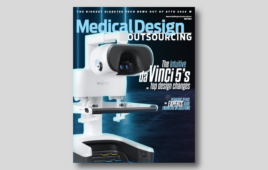
[Image courtesy of Orchid]
An orthopedic coating is used on implants to help improve the functionality of an implant. Usually, the coatings can help define the geometry and the mechanical strength of an implant, according to Orchid (Holt, Mich.).
Coatings can be applied to different implants for a number of applications. These applications can include hip components, knee components, shoulder components, cones, sleeves, wedges, extremities and spinal implants.
Orthopedic coatings are designed to last as long as the implant is in the body, which can be anywhere between 20 and 30 years. They are made of the same materials that an implant is made from, like titanium or cobalt-chrome, and serve a variety functions.
Particles in coatings were much bigger 25 years ago than they are now. Now, the sizes can range from 88 microns to 707 microns.
In the design process, coatings can be customized for specific needs. The particle sizes, number of coating layers, and whether a tight or loose pack is needed can all be configured, according to Orchid.
These functions include promoting bone growth, improving the anchoring of cells with porous structures, avoiding infection by using anti-infective coatings and reducing implant wear.
The different types of coatings include hydroxylapatite (HA), titanium plasma spray (TPS) rough coating, TPS porous coating, resorbable blast media (RBM), anti-wear and sintered. Each coating serves a unique function when applied to implants:
- Proprietary HA coatings are bone-like coatings and can be applied to cobalt-chrome, titanium or stainless steel implants to accelerate bone growth. TPS improves mechanical fixation with porous and rough coatings.
- TPS coatings, when applied to titanium or cobalt-chrome substrates, allows the coating to exceed the ASTM requirement while eliminating cracking of the implant.
- RBM coatings create a rough surface without leaving embedded debris. On titanium implants, RBM coatings create a roughened surface that is comparable to a 100 mesh aluminum oxide finish without leaving embedded debris behind.
- Anti-wear coatings enhance the wear properties of implantable components. These coatings are a tough ceramic coating that has enhanced wear properties for implantable components.
- Sintered coatings create a smooth or rough surface that is porous enough to allow bone and tissue to grow into.
There is still room for more innovations when it comes to implant coatings, including enabling increased the lifetime of an implant, avoiding implant loosening, use of cementless implants and hypoallergenic implants.
Having been used since the 1970s, orthopedic coatings have some limitations as well. High-temperature sintering of coatings reduces strength. Also, specific metal coatings have to be used with specific metals. For example, a titanium coating can’t be used with a stainless steel implant.
A medical device company’s decision to coat an orthopedic implant is up to the needs of the doctors, patients and insurance companies involved in the procedure.
(See the best minds in medtech live at DeviceTalks West, Dec. 11–12 in Orange County, Calif.)




